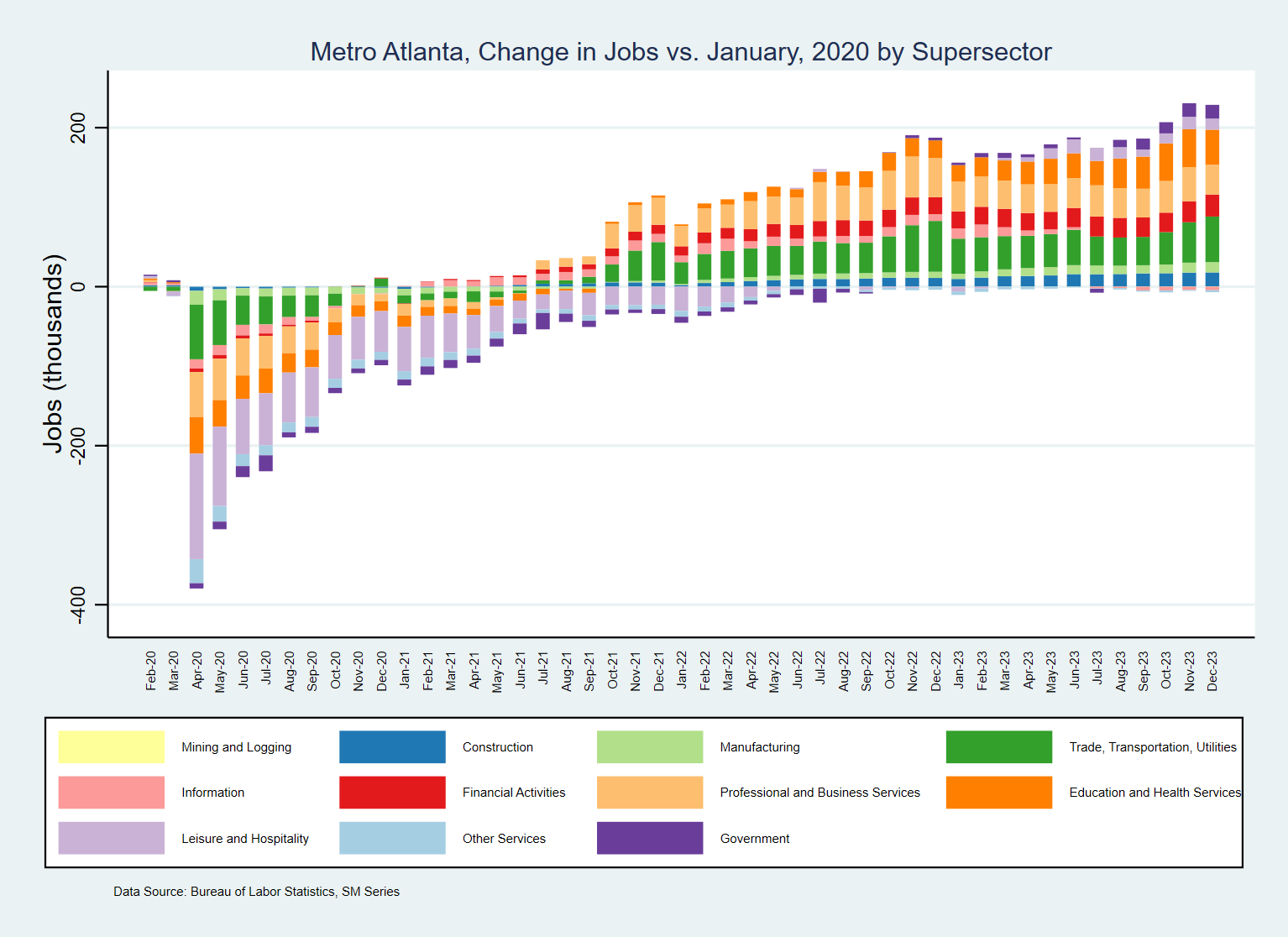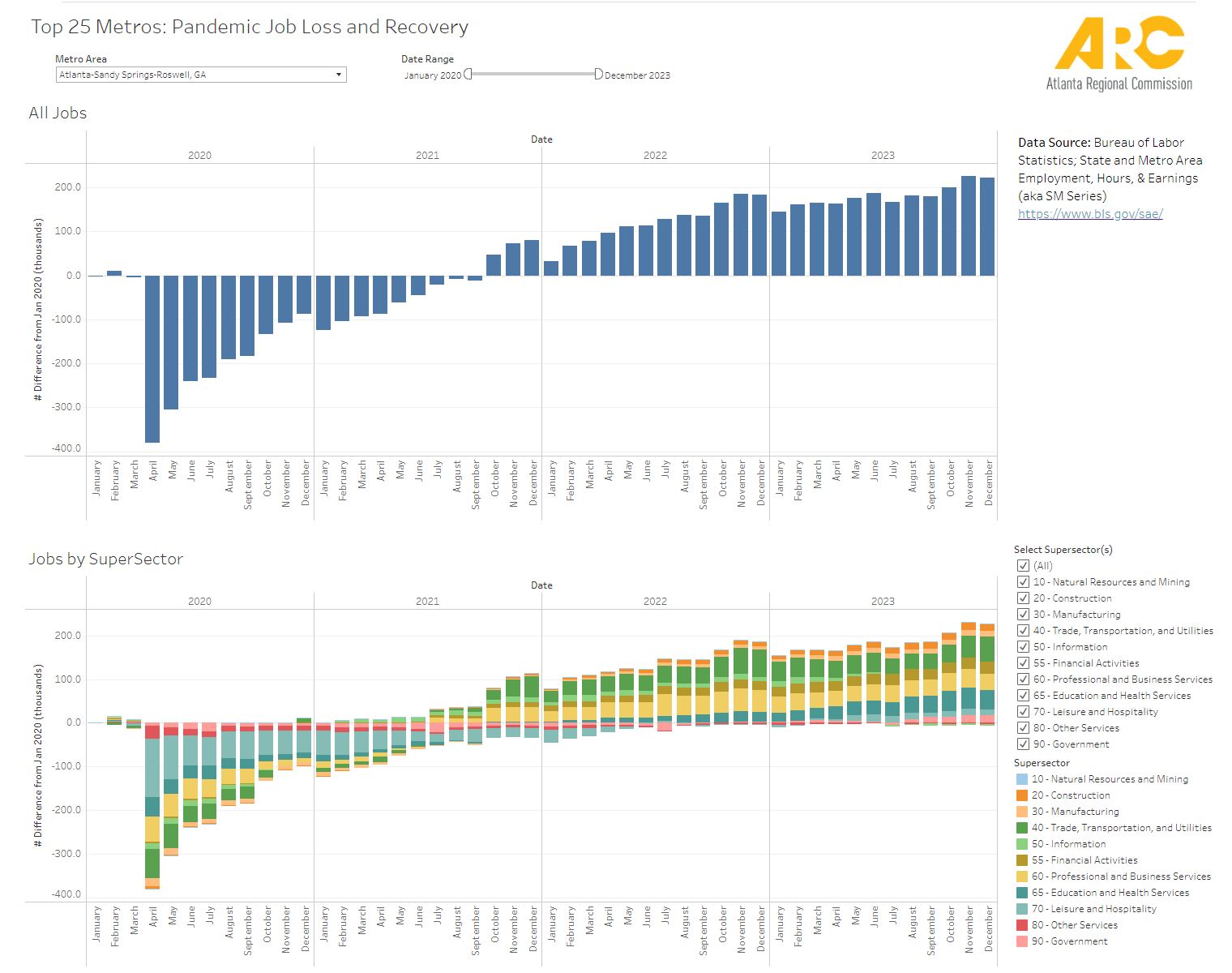Marking the fourth anniversary of COVID-19 pandemic-related shutdowns [1] provides an opportunity to look at the impact of the pandemic on jobs in Metro Atlanta (or Atlanta MSA). Have Atlanta jobs recovered from the pandemic? If so, what does that recovery look like? And how does Metro Atlanta compare to other major metropolitan areas?[2]
To answer these questions, we turn to the Bureau of Labor Statistics (BLS), specifically the State and Area Employment, Hours and Earnings data.[3] The BLS releases monthly estimates of the number of jobs by sector for metropolitan areas.
A. The Overall Picture
Figure 1 shows the change of the overall number of jobs as compared with January, 2020 over time.
Figure 1: Change in Jobs in Metro Atlanta

As the above graph shows, the jobs market in Metro Atlanta fell off a cliff in April 2020, shedding almost 380,000 jobs as compared with January, 2020. That represented a drop of over 13% of total jobs. Recovery took about a year and a half. It was not until October, 2021 that the Atlanta MSA had more jobs than it did in January 2020. By the end of 2023, Metro Atlanta had about 222,000 jobs more than four years prior, a growth of about 7.7% over that period.
B. Disaggregated by Jobs Sectors
Figure 2 that follows shows the job change over time, broken down by BLS supersector.[4]
Figure 2: Change in Jobs by BLS Supersector in Metro Atlanta
It’s clear from Figure 2 that the recovery has been uneven across job sectors. While some job types had recovered to January, 2020 levels as early as December of that same year, some sectors remained below their pre-pandemic levels as late as December, 2023.
Let’s examine three of these supersectors more closely. Figure 3 below focuses on changes in Trade, Transportation, and Utilities jobs.
Figure 3: Change in Jobs for Trade, Transportation, and Utilities Supersector for Metro Atlanta

This graph shows that after a peak-pandemic loss of nearly 69,000 jobs (an 11% drop from January 2020 levels), this sector rebounded earlier than average[5]. Jobs in this sector peaked during the 2022 holiday season, and (aside from another seasonal peak in 2023), settled in at about 40,000 jobs more than pre-pandemic.
Figure 4 that follows provides data for the Leisure and Hospitality supersector.
Figure 4: Change in Jobs for Leisure and Hospitality Supersector for Metro Atlanta
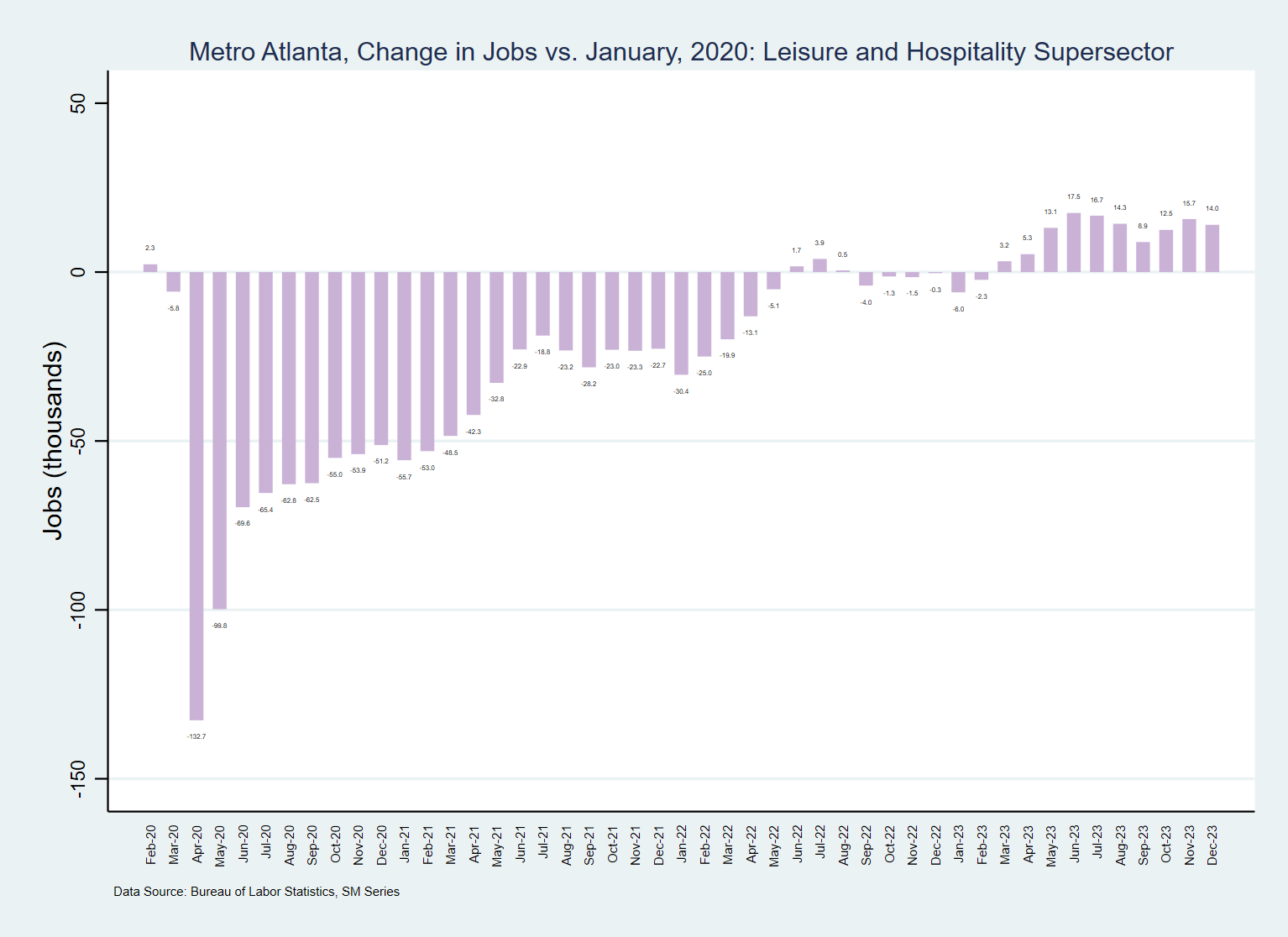
The Leisure and Hospitality sector was especially hard-hit, losing almost 133,000 jobs (about 45% of the January, 2020 level) during the initial pandemic drop. In this case, the recovery was slower than average, showing significant growth (as compared with pre-pandemic levels) only beginning in early 2023.
Figure 5 below examines the Information supersector.
Figure 5: Change in Jobs for Information Supersector for Metro Atlanta
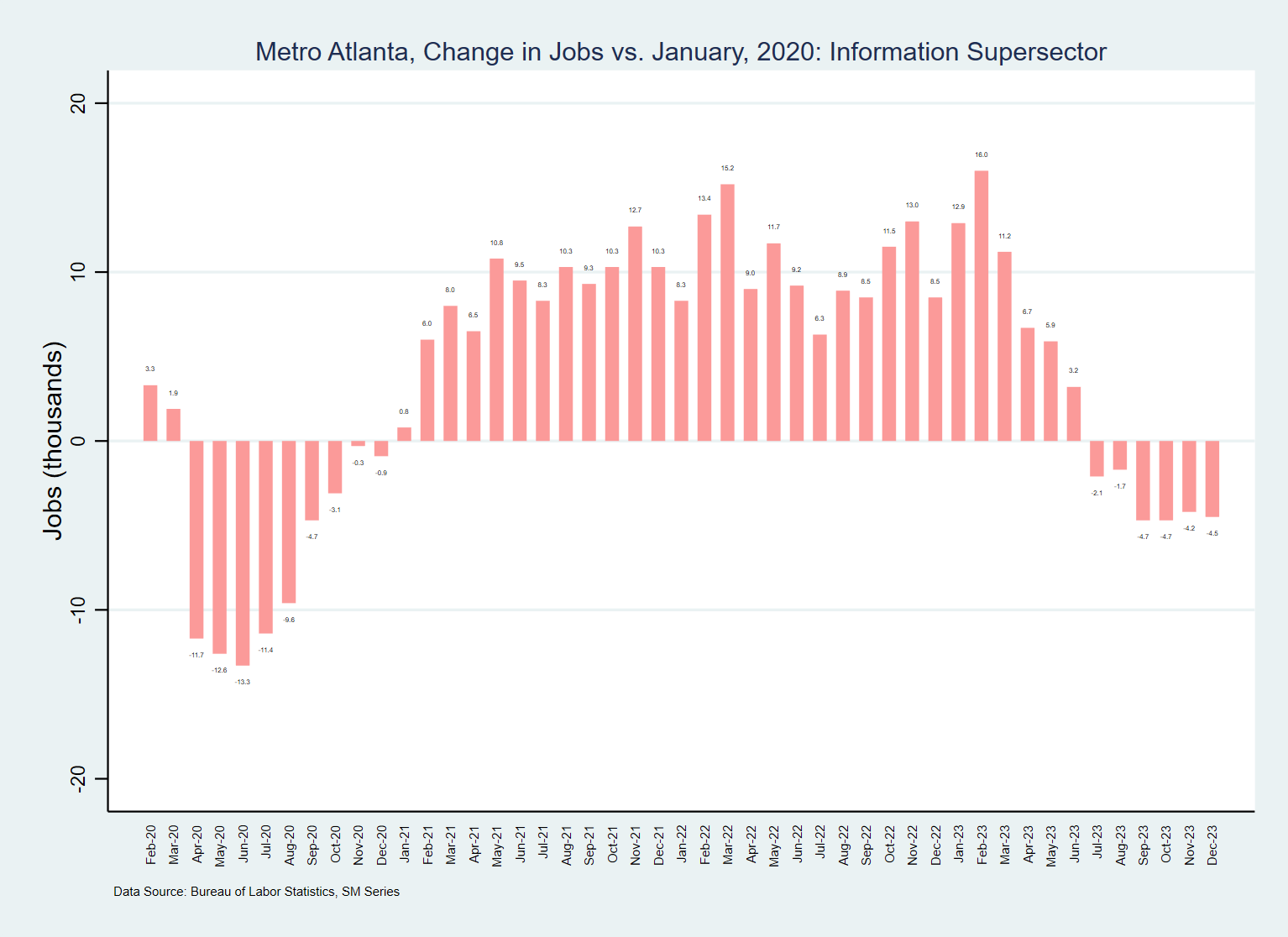
As the above chart shows, Metro Atlanta shed about 12,000 information jobs in April, 2020 compared with January of that same year (for a decline of about 11% off January’s number), but recovered much more quickly than other job sectors.[6] However, with the IT layoffs we saw in 2023, the job numbers for this supersector have actually remained below their pre-pandemic levels.
C. Atlanta MSA vs. Other Metros
How has Metro Atlanta fared in comparison with its peers?
Figure 6 shows the percent change in total jobs between January 2020 and December, 2023 for the twenty largest metro areas.
Figure 6: Change in Total Jobs for the Nation’s Twenty Largest Metros
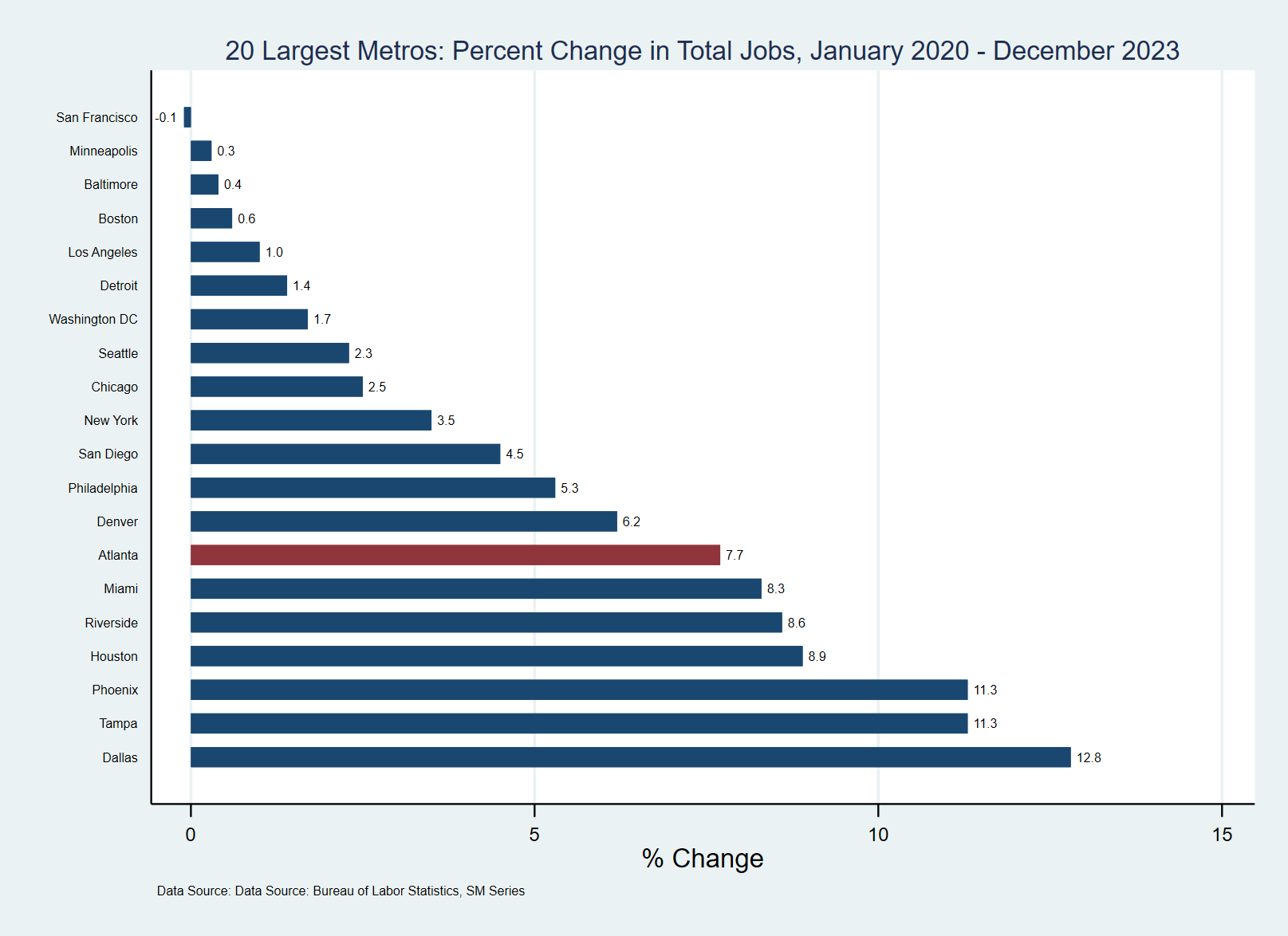
With the exception of San Francisco, all of the 20 largest metros have gained jobs as compared with their pre-pandemic levels The big job winners over this period, at least in percentage terms, are Dallas, Tampa, and Phoenix– all three of these metros notched double-digit growth. Atlanta is above the median, ranking #7 among the 20 metros.
D. Want to Learn More?
We have created a visualization that allows you to explore pandemic-related job losses and the subsequent recovery by BLS supersector for the 25 largest metro areas. Visit https://public.tableau.com/app/profile/moshe.haspel/viz/Top25MetrosPandemicJobLossandRecovery/PandemicJobLossandRecovery or click anywhere on the sample images below.
Footnotes:
[1] President Donald Trump declared a national COVID-19 emergency on March 13, 2020 and Governor Brian Kemp followed suit March 14 by declaring a Public Health State of Emergency (see Executive Order 03.14.20.01 https://gov.georgia.gov/document/2020-executive-order/03142001/).
[2] According to the latest 2023 Census Bureau estimates released on March 14, the Atlanta metro is now #6 in terms of population.
[3] For more information about these data, see the BLS website https://www.bls.gov/sae/
[4] To learn more about how the BLS aggregates North American Industry Classification System (NAICS) into supersectors, see https://www.bls.gov/sae/additional-resources/naics-supersectors-for-ces-program.htm
[5] Remember all that stuff we bought when we were stuck at home?
[6] Remember when everything was a Zoom call?


